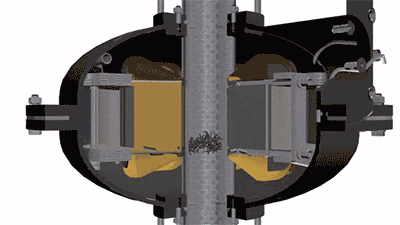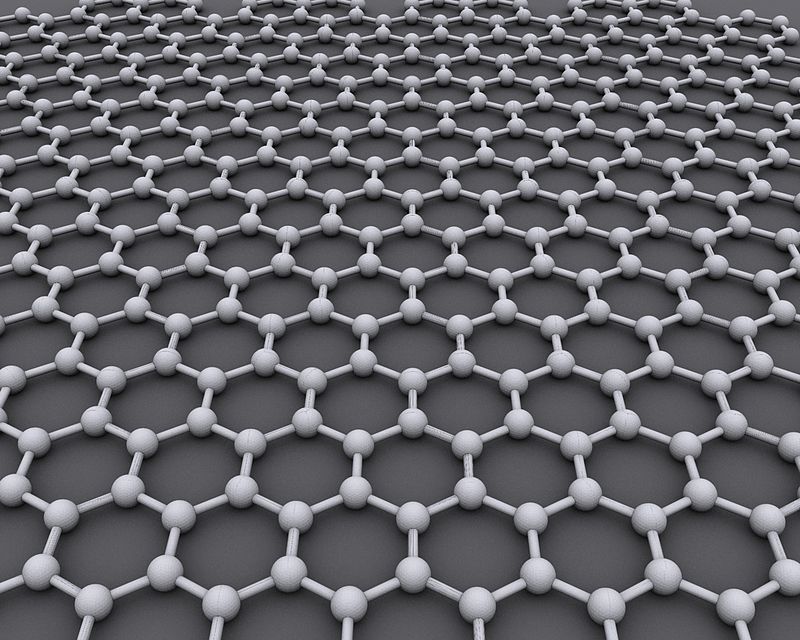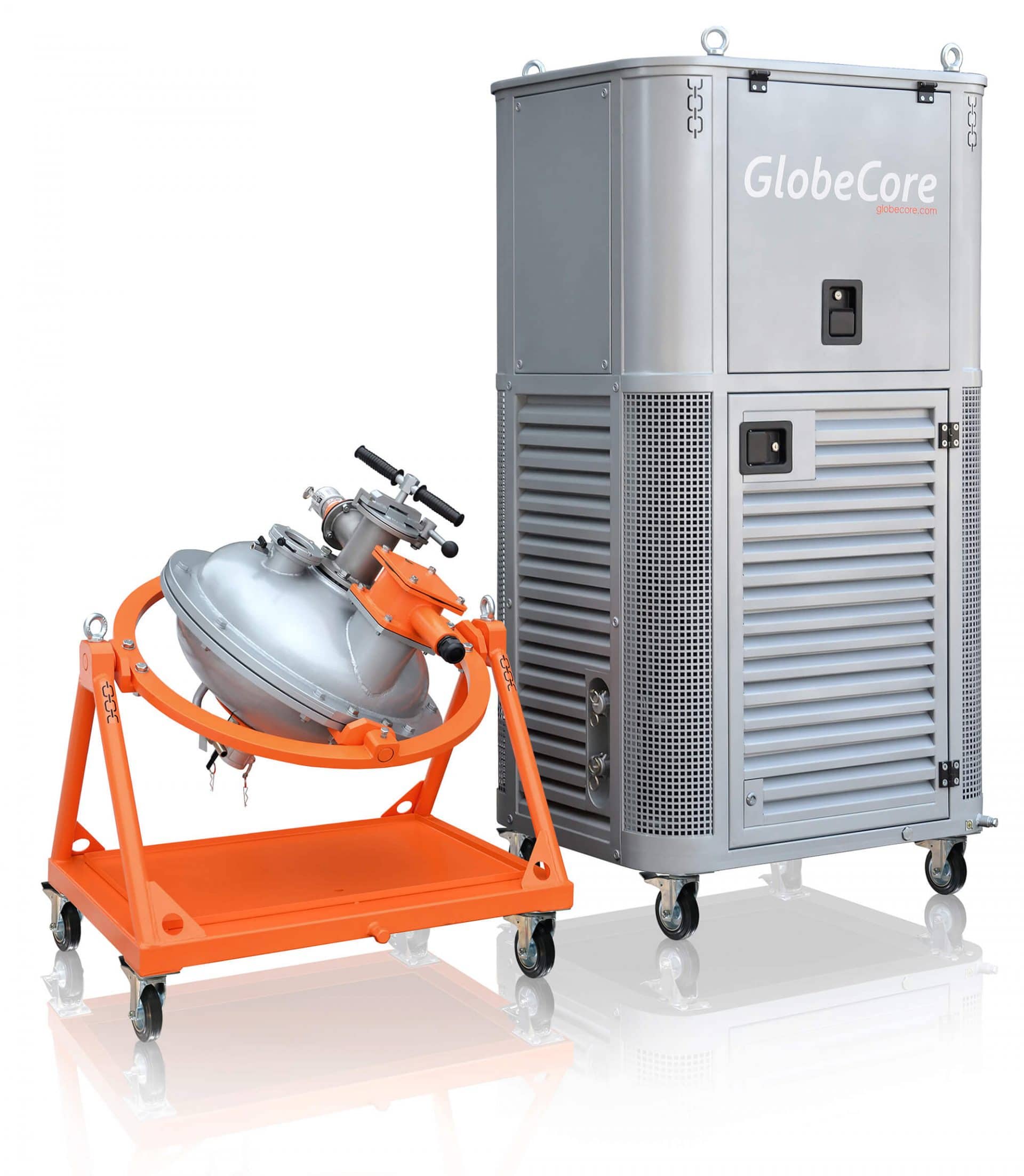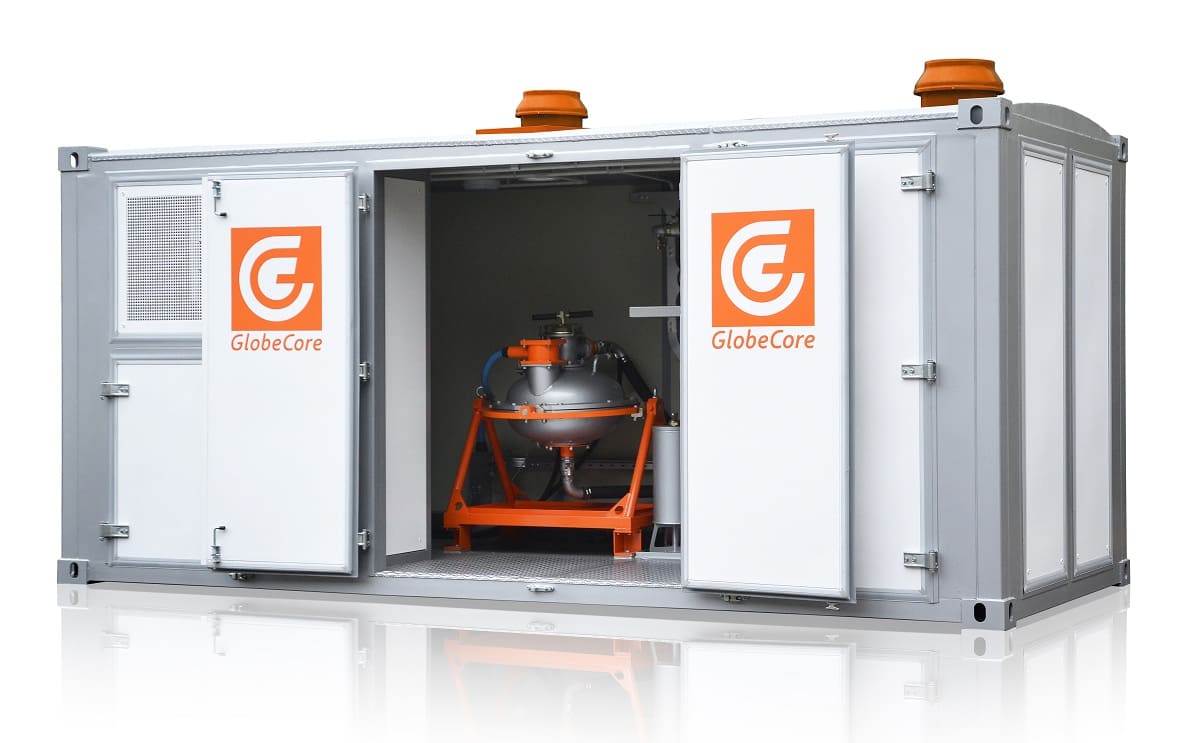In this article, we will discuss what graphene and a graphene lubricant mean, as well as the way to improve the operational properties of graphene lubricants using a vortex layer device.
In 2010, the Nobel Prize in Physics was awarded to A. Geim and K. Novoselov who carried out groundbreaking experiments concerning the two-dimensional material of graphene. A little more than ten years have passed since then, and graphene has already found applications in many industries. So far, large-scale use of graphene has been constrained by its relatively high price, but along with improvement of technologies for producing the material, its price will decrease as well which is already observed even now.
What does graphene mean?
The main feature of graphene as a material is two-dimensionality of its atomic crystal. The crystal consists of carbon atoms arranged in a hexagonal lattice. It is possible to imagine what the graphene lattice model looks like if the top layer of empty honeycombs is carefully cut off parallel to their flat base. As a result, we will see a plane grid with identical hexagonal cells — this is what a single-layer crystalline structure of graphene looks like.
Figure 1 – Graphene fibers through the scanning electronic microscope
Graphene production
Graphene is produced from graphite, because graphite is essentially a stack of individual graphene layers. It means the task is narrowed down to separating a layer carefully. In order to remove the top layer, for example, an adhesive tape (scotch tape) can be used which is transferred to the substrate surface together with the finest graphite crystals. If the adhesion of obtained graphene crystals to the substrate is higher than their adhesion to one another, then graphene crystals remain on the substrate surface.
There are other graphene production methods, for example, chemical stratification. Graphite is processed with acids to form hydrophilic graphene oxides (graphons) which are then reduced to low-quality graphene.
Applications of graphene
Applications of graphene constantly expand due to its properties: high conductance and thermal conductivity, strength and hydrophobic nature. Known applications of graphene:
- production of graphene substrates for examining the samples by spectroscopy;
- production of graphene transparent conductive coatings for solar cells and liquid crystal displays;
- production of graphene integrated microcircuits;
- production of graphene field-effect transistors;
- using in thermoregulation of smartphones;
- using in rechargeable batteries;
- production of composite materials;
- production of lubricant grease, etc.
Let us discuss the use of graphene in production of lubricant grease in greater detail.
Lubricant grease — why is graphene contained therein?
The main purpose of lubricants is to reduce friction and, subsequently, wear of mutually contacting surfaces. Now imagine you have a ball-shaped sample made of zirconium oxide and a silicon wafer. If you start to perform a reciprocating motion of this ball on the wafer, a “groove” will form on the wafer surface in 10–15 minutes. If the thinnest layer of graphene (not more than 1 nm) is applied to a new silicon wafer in some way, and tests are carried out afterwards with the reciprocating motion of the ball, then the wafer will remain intact. In this case, the friction coefficient will be low and will hardly change for a long time. The property of graphene to maintain a low friction coefficient is retained in both wet and dry media.
Another useful property of graphene is that it repels water and does not allow air to pass through; in other words, it slows down oxidative processes on the surface of metals. All of these are good prerequisites for using graphene in production of lubricant grease.
Graphene lubricant — special aspects of production
In general, a lubricant is a substance consisting of a liquid base (dispersion medium), a solid thickener (dispersed phase), and additives (admixtures). The feature of graphene is that it can be used both as a thickener and as an admixture providing good tribological characteristics of a lubricant. However, these characteristics can be achieved only if graphene is uniformly distributed throughout the lubricant volume regardless of whether it is used in a relatively large amount (as a thickener) or in small amounts (as an additive). Conventional mechanical mixers fail to cope with this task which does not allow achieving the optimal tribological characteristics of a lubricant.
A ferromagnetic particles vortex layer device (AVS) will help in good mixing and uniform distribution of ingredients.
Vortex layer device for graphene lubricants

- acoustic vibrations;
- cavitation;
- rotating electromagnetic field;
- mixing effect of each ferromagnetic particle, etc.
These factors ensure efficient mixing of ingredients and uniform distribution thereof throughout the volume. It is very important when graphene is used as an additive in the amount of 0.1%, for example. In this regard, AVS is unique equipment, because it uniformly distributes even such a small amount of substance throughout the lubricant volume.
If graphene is used as a thickener in the amount of 10–12%, for example, then preliminary mixing of ingredients can be carried out by means of conventional mixers, and obtained mixture can be additionally processed in a vortex layer device.
The use of vortex layer devices in production of graphene lubricants improves the tribological characteristics (the friction and wear coefficients) compared to the same characteristics obtained using other equipment (mixers, mills, etc.).
Prospective application of AVS — mechanical activation of graphite lubricant
The experience we have gained in terms of practical application of vortex layer devices indicates that they offer prospects for mechanical activation of graphite lubricants.
The essence of the hypothesis is as follows. When processing the graphite lubricants in a vortex layer device, the particle size and layering of graphite decrease; in other words, graphene structures can be formed which will improve the tribological characteristics of graphite lubricants.
Advantages of vortex layer devices
The application of vortex layer devices in production of graphene lubricants has the following advantages:
- The device uniformly distributes graphene throughout the lubricant volume regardless of the amount, up to tenths and hundredths of a percent.
- The device does not consume much power. GlobeCore produces AVS-100 and AVS-150 models of a vortex layer device that have the power requirement of 4.5 and 9 kW, respectively.
- The process of mixing the ingredients in the vortex layer device proceeds very quickly (in a matter of seconds and minutes) due to the influence of intensifying factors in the form of ultrasound, cavitation, high local pressures, a rotating electromagnetic field, etc.
- The device operates in a stream mode and can be easily integrated into existing technological lines for production of graphene lubricants both instead of the main mixer with a tank (floor space saving) and as installed after them for additional processing of ingredients.
- The device is simple and unpretentious in maintenance. It has no friction components that require constant servicing.
- Durability. The service life of the devices may reach decades depending on operational conditions.
For further information and for ordering an experiment, please use the contact details contained in the appropriate section of our website.



 AVS-100 Mixing Machine. ...
AVS-100 Mixing Machine. ... AVS-150 Chemical Mixing ...
AVS-150 Chemical Mixing ... AVSk-150 Wastewater Treatment ...
AVSk-150 Wastewater Treatment ...